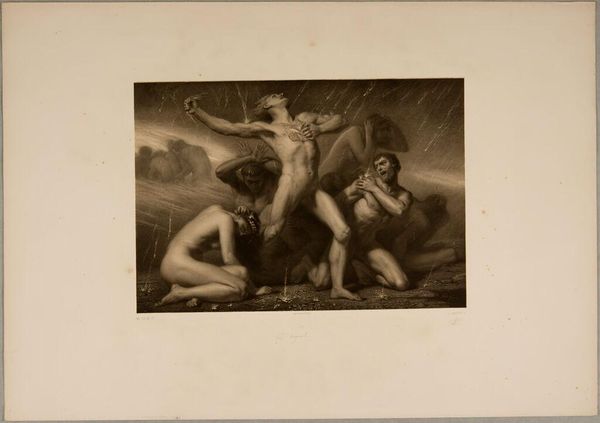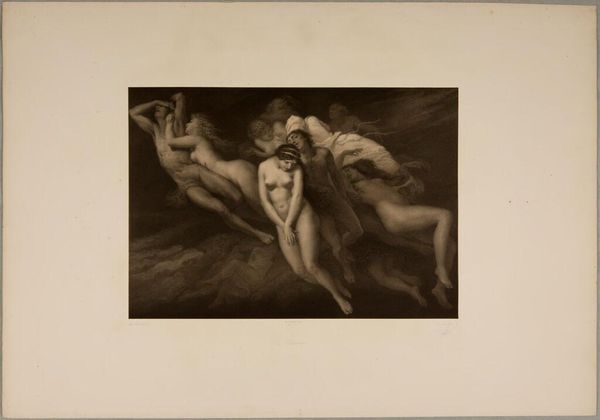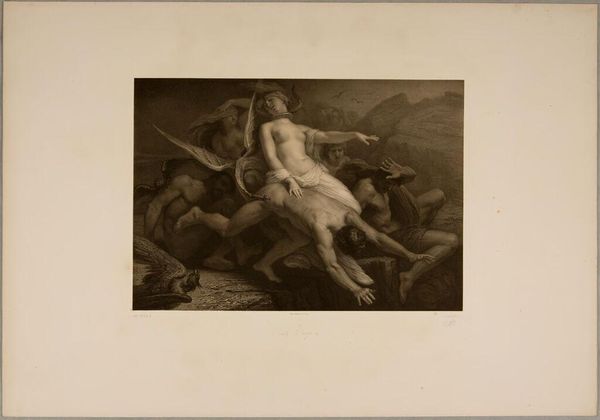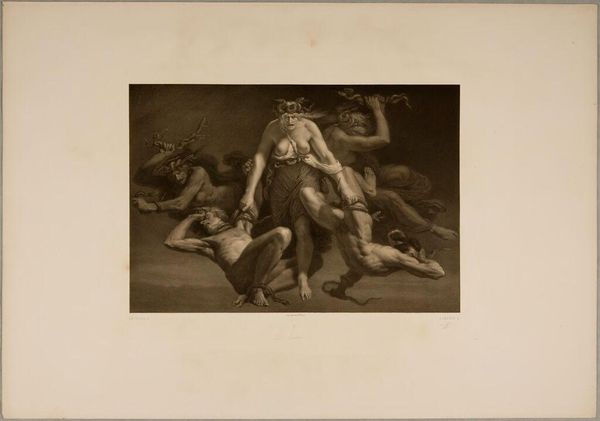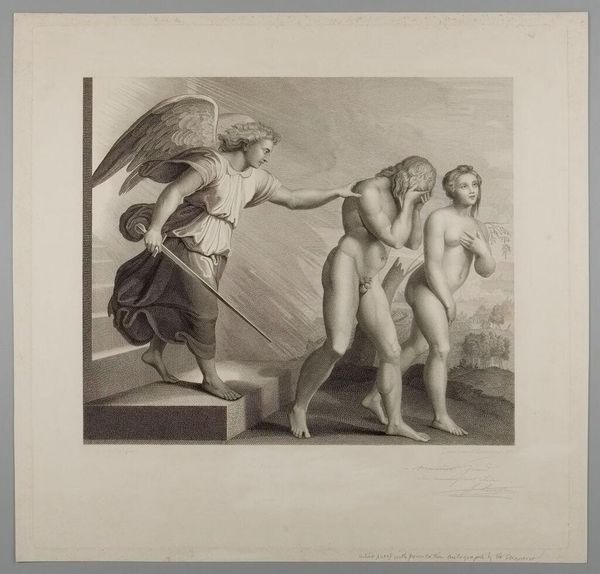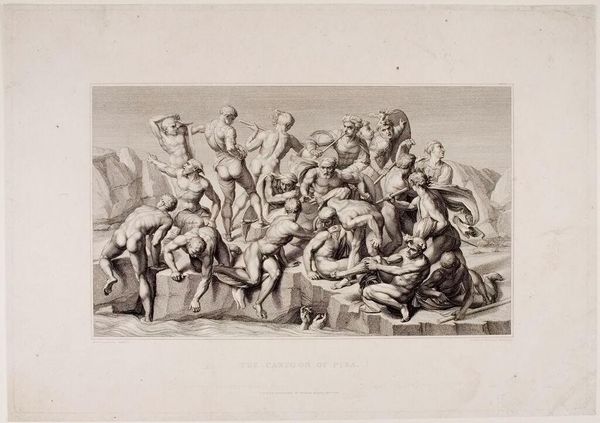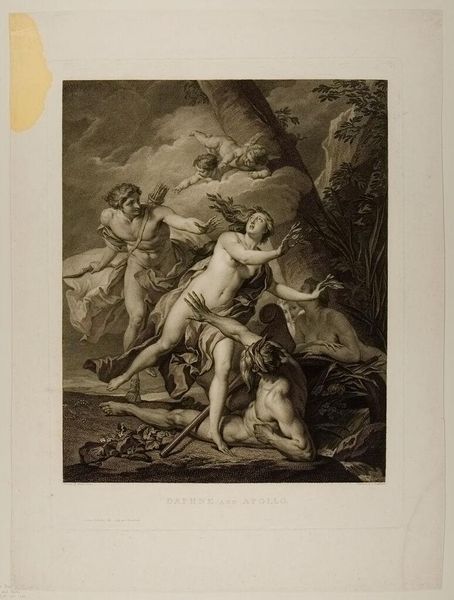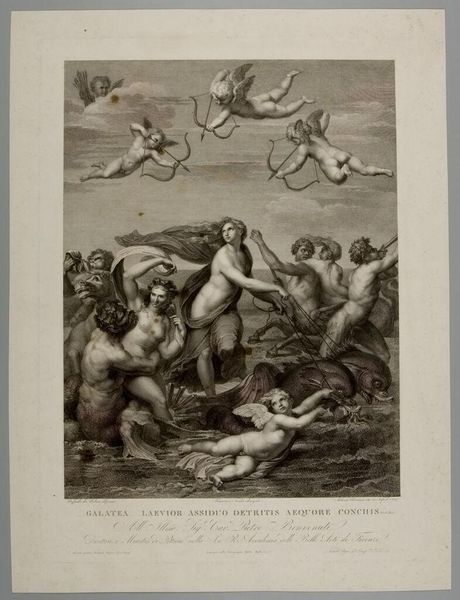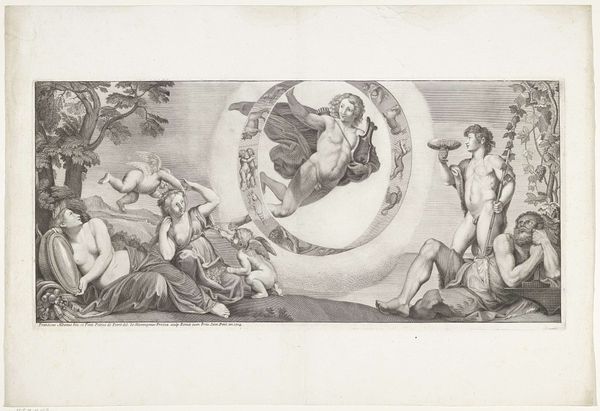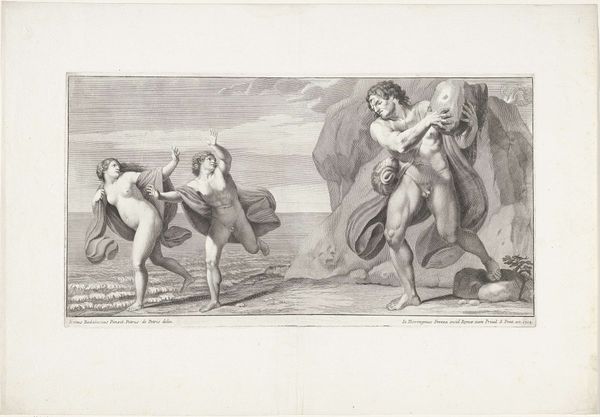
Copyright: CC0 1.0
Curator: Jean Jules Jacott’s, "Wrath," now at the Harvard Art Museums, depicts a scene of utter chaos and despair on the water. What strikes you first about it? Editor: Immediately, it’s the sheer emotional intensity. It feels like a shipwreck of the soul. The figures are so intertwined, flailing. Curator: Precisely! The use of light and shadow creates a dramatic effect, highlighting the figures' struggle against both themselves and the elements. I see it as a symbolic exploration of inner turmoil. Editor: The Poseidon figure standing heroically on the raft almost seems to orchestrate the chaos, as if the raft is a stage for human suffering. Curator: I agree, but it's more nuanced. Wrath, as Jacott portrays it, is a multi-layered concept. It’s external as well as internal, inflicted and self-inflicted. It's quite profound how he uses the figures to convey this message. Editor: Yes, I see how he represents wrath not just as anger, but as a force that consumes and distorts. Well, that was quite the intense little voyage we took there. Curator: Indeed. It reminds me that even in chaos, art can offer us a strange kind of clarity, like a lighthouse in the storm.
Comments
No comments
Be the first to comment and join the conversation on the ultimate creative platform.
